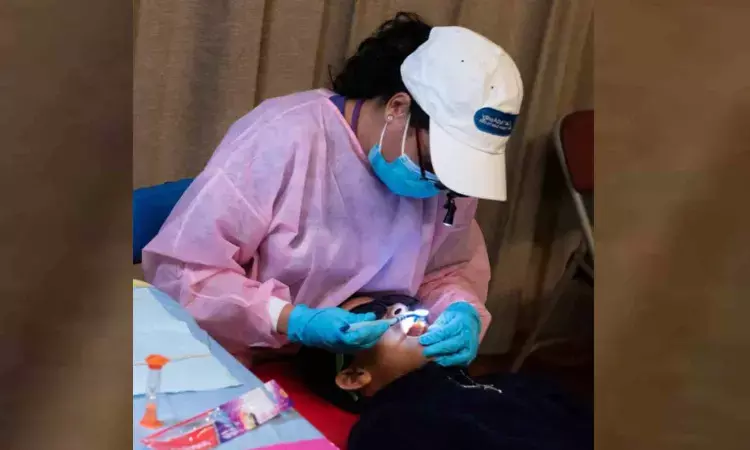- Home
- Medical news & Guidelines
- Anesthesiology
- Cardiology and CTVS
- Critical Care
- Dentistry
- Dermatology
- Diabetes and Endocrinology
- ENT
- Gastroenterology
- Medicine
- Nephrology
- Neurology
- Obstretics-Gynaecology
- Oncology
- Ophthalmology
- Orthopaedics
- Pediatrics-Neonatology
- Psychiatry
- Pulmonology
- Radiology
- Surgery
- Urology
- Laboratory Medicine
- Diet
- Nursing
- Paramedical
- Physiotherapy
- Health news
- Fact Check
- Bone Health Fact Check
- Brain Health Fact Check
- Cancer Related Fact Check
- Child Care Fact Check
- Dental and oral health fact check
- Diabetes and metabolic health fact check
- Diet and Nutrition Fact Check
- Eye and ENT Care Fact Check
- Fitness fact check
- Gut health fact check
- Heart health fact check
- Kidney health fact check
- Medical education fact check
- Men's health fact check
- Respiratory fact check
- Skin and hair care fact check
- Vaccine and Immunization fact check
- Women's health fact check
- AYUSH
- State News
- Andaman and Nicobar Islands
- Andhra Pradesh
- Arunachal Pradesh
- Assam
- Bihar
- Chandigarh
- Chattisgarh
- Dadra and Nagar Haveli
- Daman and Diu
- Delhi
- Goa
- Gujarat
- Haryana
- Himachal Pradesh
- Jammu & Kashmir
- Jharkhand
- Karnataka
- Kerala
- Ladakh
- Lakshadweep
- Madhya Pradesh
- Maharashtra
- Manipur
- Meghalaya
- Mizoram
- Nagaland
- Odisha
- Puducherry
- Punjab
- Rajasthan
- Sikkim
- Tamil Nadu
- Telangana
- Tripura
- Uttar Pradesh
- Uttrakhand
- West Bengal
- Medical Education
- Industry
School-based Dental Program Reduces Cavities by More than 50 Percent

A school-based cavity prevention program involving nearly 7,000 elementary school students reduced cavities by more than 50 percent, according to a study led by researchers at NYU College of Dentistry. The findings are published March 1 in the Journal of the American Dental Association.
"The widespread implementation of oral health programs in schools could increase the reach of traditional dental practices and improve children's oral health—all while reducing health disparities and the cost of care," said Richard Niederman, DMD, professor and chair of the Department of Epidemiology & Health Promotion at NYU College of Dentistry and the study's senior author.
Dental cavities are the most common chronic disease in children, and one in five elementary school children have at least one untreated cavity. While cavities can be prevented with dental visits and good at-home oral hygiene, some families experience barriers to seeing a dentist, including cost and parents having to take time off of work.
"School-based cavity prevention programs eliminate these barriers by bringing basic dental care to children, rather than bringing children to care," said Niederman.
The study was conducted in 33 public, high-need elementary schools in Massachusetts, where dental hygienists provided care to 6,927 children. The services were provided at no cost to families.
Twice-yearly visits involved dental examinations followed by cavity prevention and treatment, including fluoride varnish, sealants, and minimally invasive fillings to stabilize cavities without drilling. Students also received oral hygiene instructions, toothbrushes, and fluoride toothpaste to take home. If more complex care was required, students were referred to local dentists. Notably, the procedures used do not create aerosols, which limits the risk of transmitting viruses through the air.
After six visits, the prevalence of untreated cavities decreased by more than 50 percent. In one group of schools, cavities were reduced from a baseline of 39 percent to 18 percent, and in a second group, cavities decreased from 28 percent to 10 percent. The prevention program reduced cavities in both baby and permanent teeth.
"In 2010, the federal government set a goal of reducing the prevalence of cavities in children by 10 percent by 2020. Our study shows that this is not only feasible, but also that a comprehensive school-based program can reduce cavities by five times their goal," said Niederman.
Recent economic analyses of school-based cavity prevention programs by researchers at NYU College of Dentistry, including one focusing on this program in Massachusetts, demonstrate that they are cost-effective and could save federal dollars. If this school-based program was implemented nationally, it could reduce Medicaid spending on children's oral health by as much as one-half.
The COVID-19 pandemic has interrupted most school-based dental care because of school closures and fear of creating aerosols, even as oral health care in dental practices has safely resumed with additional infection control measures in place. The researchers stress the importance of safely continuing school-based care, given its ability to prevent cavities using aerosol-free procedures.
Dr Kamal Kant Kohli-MBBS, DTCD- a chest specialist with more than 30 years of practice and a flair for writing clinical articles, Dr Kamal Kant Kohli joined Medical Dialogues as a Chief Editor of Medical News. Besides writing articles, as an editor, he proofreads and verifies all the medical content published on Medical Dialogues including those coming from journals, studies,medical conferences,guidelines etc. Email: drkohli@medicaldialogues.in. Contact no. 011-43720751


